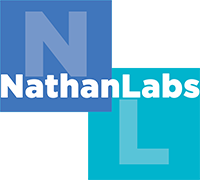Blog
How to Achieve MAS Compliance in Singapore

In an increasingly digital world, the importance of cybersecurity can’t be overstated. As monetary institutions and fintech organizations in Singapore continue to embrace technological advancements, the need for sturdy cyber hygiene practices turns into paramount. The Monetary Authority of Singapore (MAS) has established a regulatory framework emphasizing the need to retain excessive cybersecurity standards. Achieving MAS compliance isn’t always merely a regulatory obligation; it’s a strategic benefit that may safeguard a corporation’s reputation and construct trust with clients. This article outlines the crucial steps to attain MAS compliance in Singapore.
The MAS has set forth a chain of recommendations and necessities geared toward enhancing the cyber resilience of monetary institutions. The critical record is the Technology Risk Management (TRM) Guidelines, which outline the expectations for managing generation risks and cybersecurity threats. The hints emphasize the significance of adopting a proactive approach to change management, ensuring that businesses are effective, reactive, and preventive of their cyber hygiene practices.
Step 1: Conduct a Comprehensive Risk Assessment
The first step closer to accomplishing MAS compliance is undertaking an intensive chance evaluation. Organizations should become aware of their crucial property, assess the ability of threats and vulnerabilities, and evaluate the impact of cyber incidents on their operations. This assessment must be an ongoing technique, as the danger panorama constantly evolves. With expertise in their specific risks, businesses can successfully tailor their cybersecurity strategies to address these demanding situations.
Step 2: Implement Robust Security Controls
Once the risks are recognized, the subsequent step is implementing strong safety controls. This includes firewalls, intrusion detection structures, and encryption protocols. Additionally, agencies must ensure that they have access controls in place that are sufficient to limit the exposure of touchy statistics. Regular software program updates and patch control are critical to guard against recognized vulnerabilities. Businesses can mitigate the risks identified within the assessment phase by establishing a robust protection posture.
Step 3: Develop an Incident Response Plan
Having a nicely defined incident response plan is essential in the event of a cyber incident. This plan has to outline the steps to be taken in response to numerous incidents, such as data breaches and ransomware attacks. Essential additives of the plan consist of verbal exchange protocols, roles and responsibilities, and processes for containment, eradication, and recovery. Regular drills and simulations will help ensure all stakeholders are acquainted with the plan and can act unexpectedly during an incident.
Step 4: Foster a Culture of Cybersecurity Awareness
Achieving MAS compliance is going past technical measures; it also calls for fostering a culture of cybersecurity attention within the organization. Employees are frequently the primary line of protection against cyber threats, and their focus can notably affect an organization’s cyber resilience. Regular training classes and workshops must be conducted to train personnel about modern cyber threats, secure online practices, and the significance of reporting suspicious sports. By empowering employees with know-how, agencies can create a vigilant staff that actively contributes to cybersecurity efforts.
Step 5: Regularly Monitor and Audit Cyber Hygiene Practices
Monitoring and auditing cyber hygiene practices are vital to maintaining MAS compliance. Organizations need to put in force monitoring gear to discover anomalies and capability threats in actual time. Regular audits must also be performed to evaluate security controls’ effectiveness and identify areas for improvement. Engaging third-celebration auditors can objectively assess an employer’s cybersecurity posture and ensure compliance with MAS tips.
Step 6: Collaborate with Regulatory Bodies and Industry Peers
Collaboration is fundamental to improving cybersecurity resilience. Organizations should actively interact with regulatory bodies, including the MAS, to stay informed about contemporary regulatory traits and best practices in cybersecurity. Additionally, collaborating with industry boards and sharing insights with friends can foster a collaborative technique for tackling commonplace cyber threats. Groups can boost their defenses by running collectively and contributing to Singapore’s more secure financial atmosphere.
